Lean Elves: Shoemaking with Rhythm
Our workshop has seen many changes over the years. It has certainly come a long way from the old school bus that Tim and his family converted into the first Softstar workshop back in 1985. The shop has moved multiple times since then, most recently in January 2017 when we expanded into our newly renovated historic building in Philomath, Oregon.
If we haven't mentioned it before, we love love LOVE our new space! We finally have enough elbow room to stretch out, our shop floor is flooded in natural light and our local Philomath community has brought the most welcoming and friendly neighbors we could ever ask for. That doesn't mean our new shop doesn't come without challenges, though—particularly with our lean processes.
What is Lean?
If you are not familiar with the term, lean manufacturing is a concept originating from Japanese manufacturers that simply means doing more with less. Specifically, it is defined as "a systematic method for waste minimization within a manufacturing system without sacrificing productivity." In this meaning, the word "waste" is derived from the Japanese word Muda and refers not to material waste, but to non value-adding activities or processes that do not contribute to the end product (although reducing material waste is and always will be one of our three core values).
In other words, lean manufacturing is very much about efficiency and reducing the time it takes to complete the steps in a manufacturing process, but it is also about reducing stress and allowing makers to focus on their craft rather than tedious, unnecessary tasks. For example, constantly running back and forth across our shop to get a sharp pair of shears is a non value-adding practice that can be eliminated with other solutions, but skillful sewing and inspecting finished shoes for quality are value-adding practices that are necessary and should not be rushed.
Lean at Softstar
Back in the old days, when Softstar received only a handful of orders each week and employed only a small group of shoemakers to fulfill them, each seamstress would simply grab a random order and make it start-to-finish before moving on to the next one. Shoes of different styles often required a change of settings, needles and threads on a sewing machine, which would add time between orders. There was also plenty of repetitive running back and forth throughout the shop to grab supplies, move to the next work bench and other burdensome little duties. This worked fine when Softstar was a small mail order service, but as we developed our website and grew into an international e-commerce business it quickly became apparent that something needed to change. We had increasing numbers of orders to keep up with, our team found themselves dealing with more stress and we faced large price increases unless we could reduce the labor costs of making each shoe.
That's when we first started exploring lean manufacturing, and we were amazed at how simple changes in our shop could have a big effect. Here are some examples:
- We assigned sewing machines to be used only for specific styles of shoes, which allowed us to keep the settings, needles and threads in place without needing to change them every few minutes.
- The shop floor was rearranged so varying styles could be redirected to the necessary workstations without interrupting the flow of orders from the leather cutter to the shipping counter.
- Going through our production process, we found points where orders were piling up and bottle-necking our production line. At these workstations, we would either split the work into tasks that multiple people could complete or hire another employee to run two of these processes at once.
These easy adjustments not only allowed us to make shoes at a faster pace, but also gave us a steady rhythm of shoemaking. The smooth flow of orders through our shop created a heartbeat that we could follow to center on our work with a steady pulse. Our team experienced less stress, made less mistakes and found their jobs became more enjoyable.
Over the past decade, we've explored dozens, if not hundreds, of similar lean adjustments to refine our processes. These involve everything from rearranging the order of our shoelace bins to building entirely new specialized workbenches. The goal is not to automatize our shop, but rather to reduce unnecessary busywork so our team can focus on and develop their handcraft skills and ultimately make our customers happier.
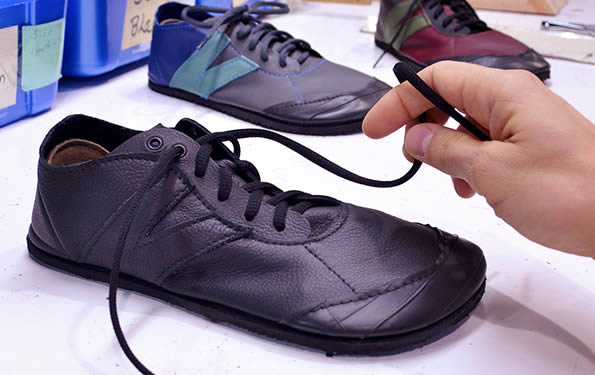
Lean Challenges
When we left our old Corvallis location, we felt very good about how lean our production team had become. Compared to similar-sized manufacturers, our efficiency was impressive, to say the least, and everyone worked together like a well-oiled machine. Even small changes go a long way, however, and moving to a new shop is no small change.
When we opened for business at our Philomath location we realized immediately that new ideas and creative thinking were needed. Just having more space between workstations introduced new non value-adding tasks that we didn't expect, as seamstresses were constantly interrupting their sewing to run across the shop and restock small supplies that previously were only a few steps away (we resolved this problem by assigning a shoemaking elf to a new "Water Spider" role, which means periodically pushing a cart throughout the shop to keep every station in constant supply). A multitude of other issues also arose, partly because of our new shop layout but also because we designed new shoe styles that required updated methods and workstations, and our skilled production elves have tackled them all one at a time.
Although we've steadily made improvements throughout the almost 2 years we've been here, the biggest change came this past month. The lean experts on our production team have been measuring, experimenting and playing with paper models of our shop floor (not an epic game of Risk, as some of us may have thought) to come up with their ultimate blueprint to rearrange our workspace. A lot of planning may have gone into it, but it only took a few short hours in one afternoon last week to put it all into place... and we noticed the results immediately. We're happy to announce that the flow of shoes through our shop is now more fluid than ever!
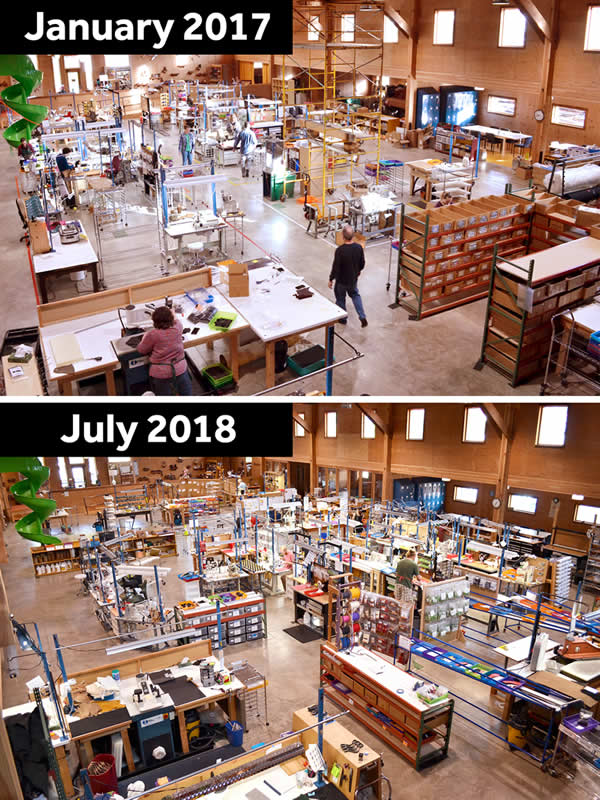
How our shoemaking floor has changed from our move in January 2017 to our new layout last week. It looks fuller, but really has just been rearranged.
It is difficult to explain the changes that were made. Local customers who frequent our shop may not even realize anything is new, except that a few sewing machines have moved around. For our shoemakers, however, it's a world of difference. The seemingly subtle changes in our layout moved some workstations closer together, separated others apart, makes restocking supplies easier and allows orders to be sent quickly to the right workbench. Most of our workstations are now double-sided, so a seamstress just needs to turn around to access a special tool or sewing machine if it is needed for the style being built. This allows us to send shoes of different styles to the same seamstresses without the need for them to get up and move to another station across the shop.
We anticipate minor tweaks will be necessary as we adjust to the new plan, but after only one week it has already exceeded our expectations. Our shoemaking elves are relieved to have less non value-adding errands so they can focus on their leatherwork. Meanwhile, our shoemaking speed has increased significantly–and none too soon, as this summer season is our busiest ever. Softstar owner Trish is so happy she's celebrating by treating the whole staff to happy hour at our local Nectar Creek tap room!
We hope you'll also appreciate these changes, as they will be reflected in the quality and speed of your orders as well as the positive mojo that goes into your shoes. While efficiency is important to us, our priority is to maintain a handcrafted product made by skilled artisans at a happy, healthy workplace (another one of our core values). Founder Elf Tim still plays an active role in our workshop, and we still use the same tools and techniques that he used back in the school bus—and we have no plans to change that. Finding balanced solutions to make our shoes more fluidly while making our staff happier has been a win-win for everyone!
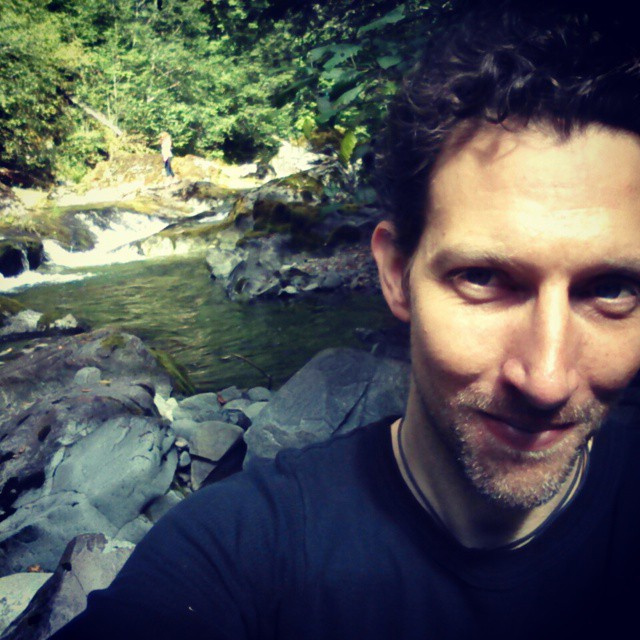
Martin is a lifelong runner who began wearing minimalist shoes over 10 years ago when he found they alleviated his chronic foot pain, which eventually disappeared completely. He further studied proper running form through a series of workshops taught by Correct Toes inventor, Dr. Ray McClanahan DPM. Martin has collaborated with several health care professionals to collect and share peer-reviewed studies that show the benefits of minimalist footwear. In his personal life, Martin loves living in the Pacific Northwest because it allows him to enjoy a variety of outdoor activities year-round, including hiking, cycling, rock climbing, surfing and snowboarding.

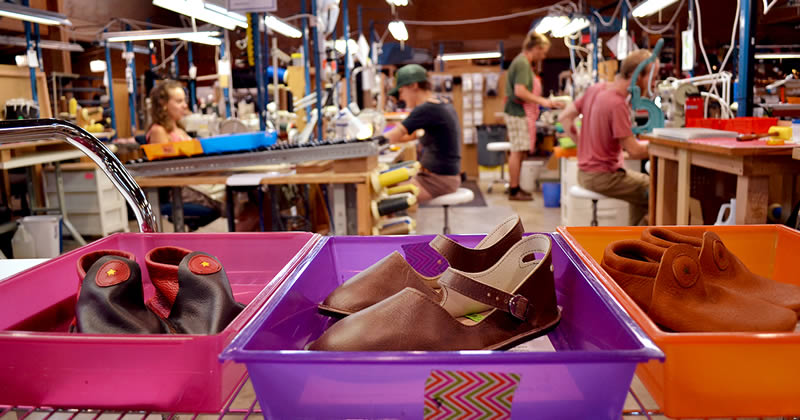
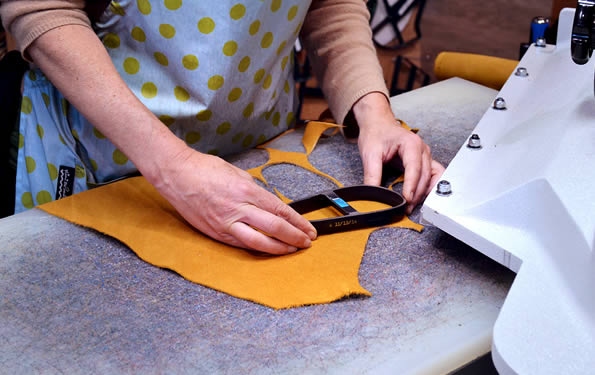

1 Comment
1 Product